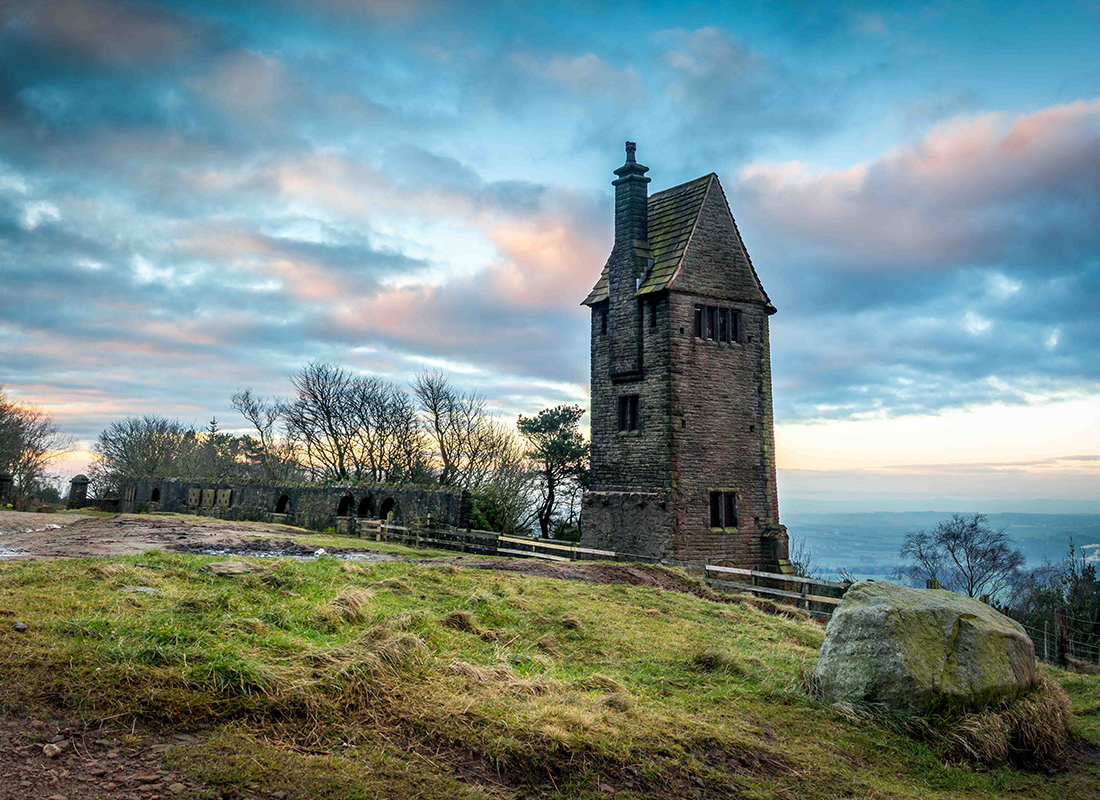Rivington Terraced Gardens

Rivington Terraced Gardens is a magical place of winding paths, caves, structures and lakes covering 45 acres of hillside.
The Gardens were originally created for soap magnate Lord Leverhulme as a spectacular venue for him to relax in and entertain. Situated on the hillside below Rivington Pike, the Gardens were designed by noted landscape designer Thomas Mawson between 1905-1922.
Rivington Terraced Gardens are totally unique, with iconic structures like the Pigeon Tower, the Seven Arch Bridge, the Summer Houses and Loggia. There’s also the Pulham rock faces around the pathways and the lakes. The Italian Lake is where Leverhulme used to take his morning swim and the beautiful Japanese Lake was once looked upon from glamorous oriental pagoda-style tea houses. There’s always something happening in the Gardens, with lots to do and activities for people of all ages and abilities. You can attend one of the fun events, get involved in practical conservation, join the volunteer admins, or just come with the family for a great day out. (See things to see and do – below)
The History
Following Lord Leverhulme’s death in 1925, the property was sold to a local brewer named John Magee, but the Gardens began to fall into disrepair from here. After being sold to the Council and then subsequently the waterboard, several structures were demolished post-World War II, and Rivington Terraced Gardens were left to the forces of nature. United Utilities now still own the land and in 2016, a £3.4Million grant was secured from the Heritage Lottery Fund as part of a £4.2Million restoration package. The ambitious project to repair and conserve the Gardens for generations to come, overseen by Groundwork CLM in partnership with Rivington Heritage Trust, has come to completion. Now through ongoing maintenance and fundraising, it aims to become sustainable.
Conservation and protection
Work focused primarily on stabilising and consolidating the 11 Grade-II listed decaying structures throughout the site. Access to and around the Gardens was also vastly improved so that more people can visit.
As the project progressed and more of the shrubs, self-seeded trees and mud was cleared away and continues to be managed, the original shape of Lord Leverhulme’s garden has become more visible. New paths were discovered, new stairways uncovered, and visitors to the gardens can now see how it once might have been.
We never plan to restore the Gardens to their original plans as this would be far too costly to create and maintain. People have also grown to enjoy the Gardens in their current wooded state. Yet all these improvements to the Gardens will mean they are better managed into the future, safeguarding their heritage for generations to come.
An extensive, ongoing programme of skills development and volunteering helps to continually establish and maintain them as a living and vibrant resource for people of all ages and abilities to become involved in, in a vast range of ways – from wielding a spade on-site to helping run a stall at promotional events!
Things to see and do
- Gardening & History enthusiasts will delight in stories about Thomas Mawson – the world’s first “landscape gardener”, James Pulham – a landscape gardener specialising in rock gardens and grottoes, and Edith Rigby – the suffragette who burned down Lever’s original house.
- Families and children will love exploring the paths, finding caves and exploring the foundation remains of the Bungalow and Lodge Houses.
- Walkers and runners love the steps, inclines and hills at this majestic entrance to the West Pennine Moors.
- Wildlife and nature enthusiasts will enjoy the interesting plants that have survived from the oriental gardens, the vast variety of fungi, and the many birds and animals that live here. Will you spot some of our roe deer as you explore the myriad of pathways?
- Stop by our Visitor Centre (run mostly by Volunteers!) to pick up a map, souvenir or interesting piece of information to help you on your journey of discovery.
- Volunteer! There are so many ways that people can get involved, from a one-off Monthly Conservation session to helping in research and fundraising groups. There’s no minimum commitment and Volunteers are the foundation and heart and soul of the project.
Accessibility
The Gardens sit on layers of terraces on the western side of Winter Hill, just below Rivington Pike. The hill is steep with numerous stairways and uneven paths. It is not accessible to wheelchairs, and even the most ruggedly built pram would struggle. Sensible footwear advised at all times.
Facilities
Car parking
There are quite a few Car Parks dotted around the base of the Gardens, and visitors also tend to park around the lanes.
Food and Drink
The area is well-served for tea rooms and cafes in the village of Rivington, at the base of the hill. Including what has been voted ‘Best Tearoom in Lancashire’ The Village Green Tearooms on Sheephouse Lane!
Toilets
There are well-maintained public toilets below the Visitor Centre, on Rivington Lane – w3w: ///sideburns.excellent.punctual
Great House Visitor Centre
As well as finding maps, walking guides and books here at the Visitor Centre, you will also find exhibits about the local area – the reservoirs, Rivington Village and Liverpool Castle. Great House Visitor Centre
Rivington Lane
Rivington
BL6 7SB
For more information
Rivington Terraced Gardens Project Manager: Briony Jolley E: briony.jolley@groundwork.org.uk
Rivington Terraced Gardens Project Officer: Kate Fenton E: kate.fenton@groundwork.org.uk
Communities Project Manager: Stephen Hodges E: stephen.hodges@groundwork.org.uk
Contact the team: E: rtg@groundwork.org.uk
You can read more about the project on the Rivington Heritage Trust website.
You can also get the latest updates about progress and activities at the Gardens via social media:
Connect with us on socials
This project is delivered in partnership by:

